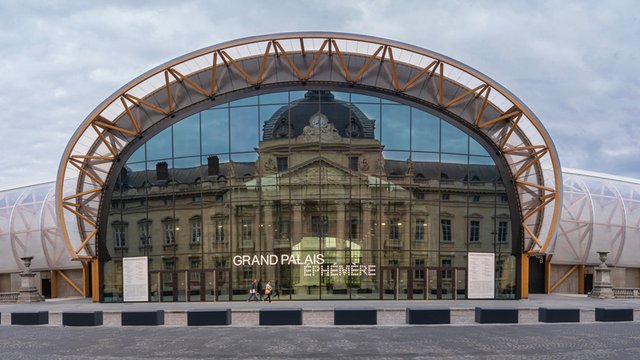

The Eiffel Tower was inaugurated in 1899, on the occasion of the Universal Exhibition in Paris. It was expected to stand for a maximum of 20 years, but today it remains one of the most visited monuments in the world. Its creation is one of the clearest examples of ephemeral architecture of the late 19th century. It is therefore not only an emblem of the "City of Light", but also of this style of construction. And it is present, like other great passing works, in the classrooms of every self-respecting Master Construction Management or Master’s Degree in Architecture.
Here we explain the principles on which this architectural technique is based and the historical legacy it has left behind.
Characteristics of ephemeral architecture
Most of these buildings are intended to last for a limited period of time and, in many cases, already predefined before the end of their construction. Moreover, not all of them are necessarily intended to be displayed only outdoors. New educational initiatives demonstrate that their constructive interest has transcended the external and that these works can also be developed indoors.
The passage of time has allowed ephemeral architectural works to evolve, without neglecting a series of basic principles that are maintained from one era to the next:
- Temporality: the creation of these works is justified by a specific event, moment or cause. Once that raison d'être loses its relevance, the work is destroyed or transformed.
- Flexibility: these works are often transformed by rapid changes in the world. Extraordinary circumstances, such as pandemics, natural disasters or wars, can cause these works to be assembled or dismantled quickly, always according to the needs of society.
- Innovation: the various advances in terms of the materials used, their sustainability, and ease of use are also hallmarks of this architectural style.
- Low cost: this is one of the priorities of ephemeral architecture, since the reduced-price cuts construction times and facilitates experimentation and research into the built works.
- Optimisation of resources: making the most of the environment in which these constructions are designed is another of the principles of this type of architecture and is in line with the cost reduction mentioned in the previous point.
- Waste management: the use of recycled and reusable materials, in line with the circular economy, has a positive impact on the environment, as it reduces the human footprint and increases energy savings.
- Do-it-yourself: this movement seeks to empower the individual to be able to make or repair objects on their own.
Types of ephemeral architecture
The development of new techniques and the appearance of new materials has boosted and expanded the number of applications of ephemeral architecture. Originally, it was guided by religious, political, military or leisure purposes and, ultimately, had a commemorative and celebratory purpose.
Today, it can also be used for the creation of nomadic housing and commercial establishments, or for emergency construction to provide a rapid response to any spontaneous needs that may arise (e.g. in humanitarian crisis situations). In certain cases, obsolescent works are also built, with the intention that they can be easily dismantled, and their various components can be easily reused in other constructions.
Examples of ephemeral architecture
Over the years, various historical circumstances and milestones have been immortalised by ephemeral works. The following are examples that have been repeated in many geographical areas:
- Amusement parks, event decorations and theatrical scenery: the use of low-cost, easily transformed materials is standard in these cases, as it allows sets to be renewed quite frequently and at low cost. The Serpentine Pavilion, created in 2016, continuously changes its structure to offer different forms to its visitors in Kensington Gardens, London.
- Stadiums: the most recent example is the World Cup in Qatar, where Stadium 947, made up of the same number of containers, was dismantled at the end of the sporting event.
- Paper Log Houses: originally created in 1955 as Paper Log Houses, they have been used on at least two occasions to help people who lost their homes in earthquakes such as those in Turkey and India in the early 2000s. They are built with low-cost materials, as evidenced by the use of sand-filled soft drink cartons for their foundations.
The recent construction of field hospitals in China and Spain in just a few days, in response to the need posed by the Covid-19 pandemic, shows that ephemeral architecture is facing an increasingly demanding present and future.
From now on, this architectural discipline will need to be more effective than gimmicky and look for more solutions to vital needs, when in the past it was more intended to offer alternatives for leisure and free time.
A wide range of opportunities is opening up for all aspiring architects who seek to enhance the value of the ephemeral, so if you are interested in working in this field, do not hesitate to consult the academic offer that Universidad Europea has for you.
Article published on April 3, 2023